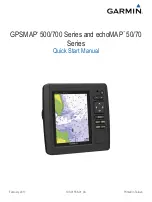
2
Externally Polarized Microphone System
Prepolarized Microphone System
4.0
Taking Measurements
The following formula is used to calculate the pressure measured by the microphone from the output volt-
age signal. The sensitivity of a microphone is typically measured at 250 Hz.
Pressure (Pa) = Voltage (mV) / Sensitivity (mV/Pa).
The lowest amplitude a healthy human ear can detect is 20 millionths of a Pascal (20
Pa). Another scale
more commonly used to describe sound pressure level is the decibel (dB). To convert the output voltage
signal (measured in Vrms) to sound pressure level (measured in decibels), use the following formula:
dB
P
S
V
SPL
ref
rms
Log
20
where
S
is the sensitivity of the microphone in mV/Pa, and
P
ref
is the reference pressure in air, which is
20 x 10
-6
Pa. The decibel scale is logarithmic and more closely matches the response reactions of the
human ear to the pressure fluctuations. Some examples of typical sound pressure levels are shown in the
table below.
dB
Pressure
Example
0
0.00002 Pa
Threshold of Hearing
60
0.02 Pa
Business Office
80
0.2 Pa
Shop Noise
94
1 Pa
Large Truck
100
2 Pa
Jackhammer
120
20 Pa
Airplane Take-Off
140
200 Pa
Threshold of Pain
At very high-pressure amplitudes, the microphone’s diaphragm will start to distort the measured sound
pressure. The maximum rated sound pressure level of a microphone is expressed as the amplitude at
which the Total Harmonic Distortion (THD) reaches a specified amount, typically 3% THD. It is im-
portant to note that the highest sound pressure level that can be measured with a microphone system may
be limited by other parts of the system, such as the preamplifier, signal conditioner, or instrumentation.
Conversely, the Cartridge Thermal Noise (CTN) specification provides the lowest measurable sound pres-
sure level that can be detected above the electrical noise inherent within the microphone.






































